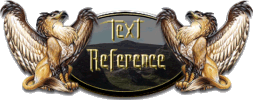
On the south eastern side of Wigford Down stands a lone wayside cross known as ‘Cadover Cross’ or sometimes as the ‘Cross on Wigford Down’. Today it is only the cross head and base which are the original components of the cross as can be seen from the restoration photograph below. It is thought that the original parts of the cross date back to the 1200s and served as a marker along the monastic track which ran between Plympton Priory and Tavistock. This fine example of a Dartmoor wayside cross stands at a height of 2.37 metres and has an arm span of 77 centimetres. Sandles, p.22.
In 1895 J. Ll. W. Page wrote the following:
“On the slopes of Wigford Down, across this bridge we shall stop for a few moments in order to examine the remains of another ancient cross which stands not far from the left-hand side of the road. The head and a small portion of the shaft alone remain, with an incised cross in the centre, and a smaller one upon each of the arms.”, p.274.
Between the July and August of 1873 soldiers from the 1st brigade and the artillery and cavalry of the 2nd division were camped on Wigford Down during the Dartmoor Autumn Manoeuvres of that year. It was whilst they were there that some of their contingent discovered the cross fragments. William Crossing relates how G. R. Scobell the vicar of nearby Shaugh Prior requested if during their encampment some of the soldiers should re-erect the old cross. This request was granted and a nine metre (diameter) grass mound surrounded by a shallow ditch was constructed and the cross head placed in its centre. p.40. Today traces of their work are still visible in the form of the mound and ditch as can be seen from the first photograph below.
Numerous early topographical writers such as Page, Crossing and Breton have mention the three incised crosses on the head. In recent times there has been some debate as to whether or not these existed but over the years the cross has been subject to some rough treatment and exposure to the vagaries of the Dartmoor climate. This has made it difficult to confirm their existence but some photographs of the early 1900s appear to depict one large incised cross in the centre of the head – see HERE

By 1901 the cross had been knocked over by what Crossing assumed to be cattle using it as a rubbing post. He commented that unless the cross was provided with a socket stone this damage would be a common occurrence. He also points out that on the cross head it show some damage from a possible fracture, p.40. on what is now its western face.
With regards to a socket stone it was as if his prayer had been answered by divine intervention. In 1915 the Rev. Hugh Breton decided it was time to resurrect the old cross to its former glory and restored the cross by fixing a new shaft to the head. He found what was a suitable site to re-erect the cross and whilst digging the hole in which to set it in came across a socket stone. He relates: “This proved to be the original socket stone in-situ. It had this unusual feature, the socket hole was 13 inches deep and quite perforated the stone. So all we had to do was to fix it in its original position – a very satisfactory restoration.”, p.16.
Sadly the ‘satisfactory restoration’ only lasted 21 years for in 1936 it was discovered hidden in a pile of rubbish by members of the Plymouth section of the Devonshire Association and was later re-erected. Hemery, p. 227.
If ever you visit the cross on a dark, moonlit night you may just hear the eerie sounds of a ghostly battle echoing around the area. There are the distinct sounds of swords clashing, men screaming and shields crashing in what clearly is a tumultuous battle. Even stranger than this supernatural phenomenon is that fact that nowhere in the historic record is there any mention of a battle taking place anywhere in the vicinity. However according to some sources there is a hint of such an event in the actual place-name of ‘Cadover’. In this theory the name has mutated from Cadaford and consists of two elements caed and ford. The Brittonic word caed means battle thus giving the ‘ford of the battle’. Alternatively the English Place-name Society state that the earliest documentation of Cadover was Cadewurdam which refers to the ‘farm/worthy of Cada’. Gover et. al. p.229.

Breton, H. H. 1990. The Forest of Dartmoor. Liverton: Forest Publishing.
Crossing, W. 1987. The Ancient Stone Crosses of Dartmoor. Exeter: Devon Books.
Gover, J. E. B., Mawer, A. & Stenton, F. M. 1992 The Place Names of Devon. Nottingham: English Place-Name Society.
Hemery, E. 1983. High Dartmoor. London: Hale Publishing.
Page, J. Ll. W. 1895. An Exploration of Dartmoor. London: Seeley &Co., Ltd.
Sandles, T. 1997. A Pilgrimage to Dartmoor’s Crosses. Liverton: Forest Publishing.
 Legendary Dartmoor The many aspects past and present of Dartmoor
Legendary Dartmoor The many aspects past and present of Dartmoor
